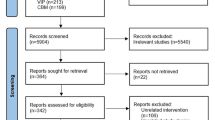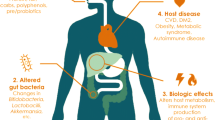Abstract
Purpose
Conventional bioavailability testing of dosage forms based on plasma concentration-time graphs of two products in a two-period, crossover-design, is not applicable to topical treatment of intestinal segments. We introduce an isotope dual-label approach (13C- and 15N2-urea) for colon drug delivery systems that can be performed in a one-day, non-invasive study-design.
Methods
Four healthy volunteers took an uncoated or a ColoPulse-capsule containing 13C-urea and an uncoated capsule containing 15N2-urea. In case of colon-release 13C-urea is fermented and 13C detected as breath 13CO2. Absorbed 13C-urea and 15N-urea are detected in urine.
Results
C and 15N in urine released from uncoated capsules showed a ratio of 1.01 ± 0.06. The 13C/15N-recovery ratio after intake of a ColoPulse-capsule was constant and lower >12 h post-dose (median 0.22, range 0.13–0.48). The 13C/15N-ratio in a single urine sample at t ≥12 h predicted the 24 h non-fermented fraction 13C of <26 %. Breath 13CO2 indicated delayed (>3 h) release and a fermented fraction 13C >54 %.
Conclusions
Breath and urine 13C and 15N data describe the release-profile and local bioavailability of a colon delivery device. This allows non-invasive bioavailability studies for evaluation of colon-specific drug delivery systems without radioactive exposure and with increased power and strongly reduced costs.





Similar content being viewed by others
Abbreviations
- AUC:
-
area under the curve
- BA:
-
bioavailability
- BE:
-
bioequivalence
- Cmax :
-
maximal concentration
- IRMS:
-
isotope ratio mass spectrometry
- PDR:
-
percentage of dosage recovered
References
EMA CPMP/EWP/QWP/1401/98: Guideline on the investigation of bioequivalence (2010).
U.S. Food and Drug Administration 21CFR part 320: Bioavailability and bioequivalence requirements.
Brunner M, Lackner E, Exler PS, et al. 5-aminosalicylic acid release from a new controlled-release mesalazine formulation during gastrointestinal transit in healthy volunteers. Aliment Pharmacol Ther. 2006;23:137–44.
Brunner M, Ziegler S, Di Stefano AS, et al. Gastrointestinal transit, release and plasma pharmacokinetics of a new oral budesonide formulation. Br J Clin Pharmacol. 2005;61(1):31–8.
Martin NE, Collison KR, Martin LL, et al. Pharmacoscintigraphic assessment of the regional drug absorption of the dual angiotensin-converting enzyme/neutral endopeptidase inhibitor, M100240, in healthy volunteers. J Clin Pharmacol. 2003;43:529–38.
Knörgen M, Spielmann RP, Abdalla A, et al. Non-invasive MRI detection of individual pellets in the human stomach. Eur J Clin Pharm Biopharm. 2010;74:120–5.
Richardson JC, Bowtell RW, Mäder K, et al. Pharmaceutical applications of magnetic resonance imaging (MRI). Adv Drug Deliv Rev. 2005;57:1191–209.
Schellekens RCA, Stellaard F, Woerdenbag HJ, et al. Applications of stable isotopes in clinical pharmacology. BJCP. 2011;72(6):879–97.
Schellekens RCA, Older GG, Langenberg SMCH, et al. Proof-of-concept study on the suitability of 13C-urea as a marker substance for assessment of in vivo behaviour of oral colon-targeted dosage forms. Br J Pharmacol. 2009;158(2):532–40.
Schellekens RCA, Stellaard F, Olsder GG, et al. Oral ileocolonic drug delivery by the colopulse-system: a bioavailability study in healthy volunteers. J Contr Release. 2010;146(3):334–40.
Schellekens RCA, Stellaard F, Mitrovic D, et al. Pulsatile drug delivery to ileo-colonic segments by structured incorporation of disintegrants in pH-responsive polymer coatings. J Contr Release. 2008;132:91–8.
Walser M, Bodenlos LJ. Urea metabolism in man. J Clin Invest. 1959;38:1617.
Heck AH, Buttrill Jr SE, Flynn NW. Bioavailability of imipramine tablets relative to a stable isotope-labeled internal standard: increasing the power of biovailability tests. J Pharmacokinet Biopharm. 1979;7(3):233–48.
ACKNOWLEDGMENTS & DISCLOSURES
The authors do not have any conflicts of interest and did not receive any financial support for this work.
Author information
Authors and Affiliations
Corresponding author
Additional information
Marina J. M. Maurer and Reinout C. A. Schellekens share first authorship.
Rights and permissions
About this article
Cite this article
Maurer, M.J.M., Schellekens, R.C.A., Wutzke, K.D. et al. A Non-Invasive, Low-Cost Study Design to Determine the Release Profile of Colon Drug Delivery Systems: A Feasibility Study. Pharm Res 29, 2070–2078 (2012). https://doi.org/10.1007/s11095-012-0735-3
Received:
Accepted:
Published:
Issue Date:
DOI: https://doi.org/10.1007/s11095-012-0735-3




